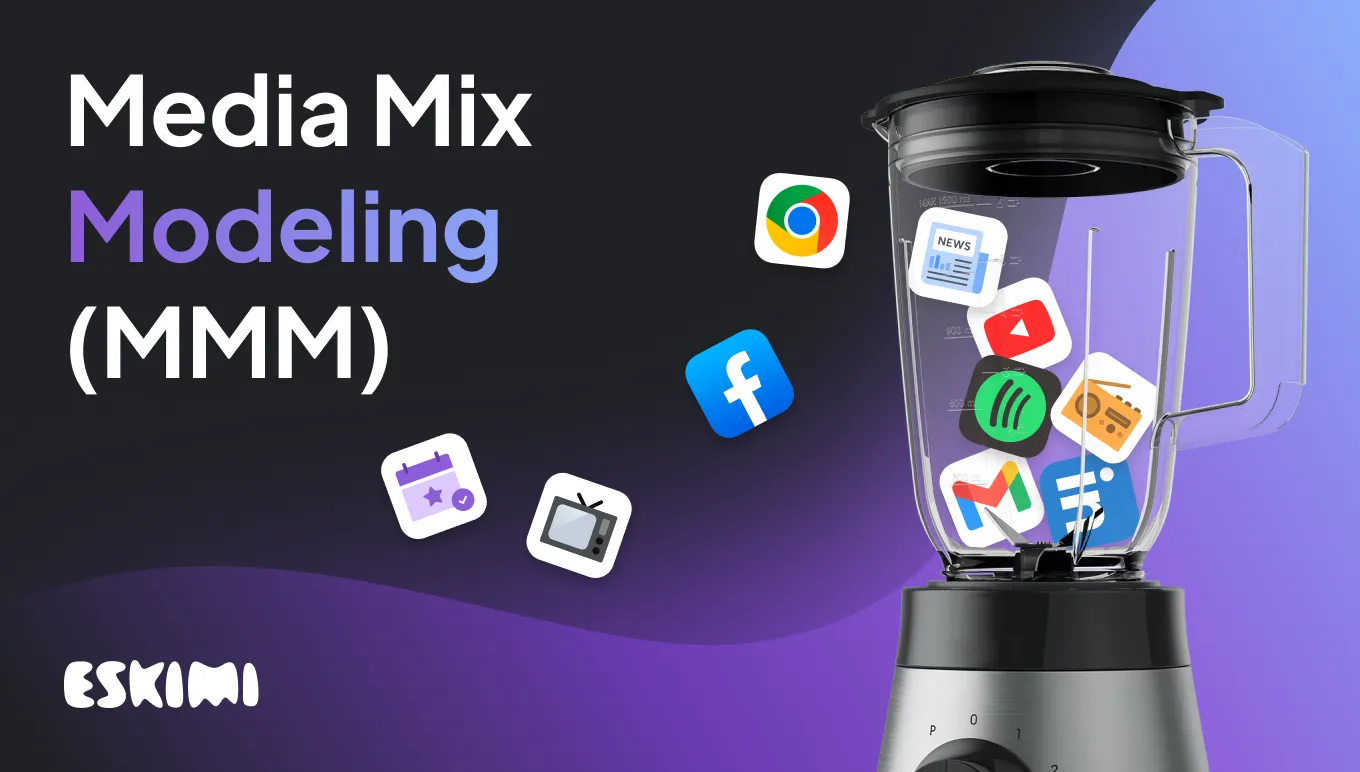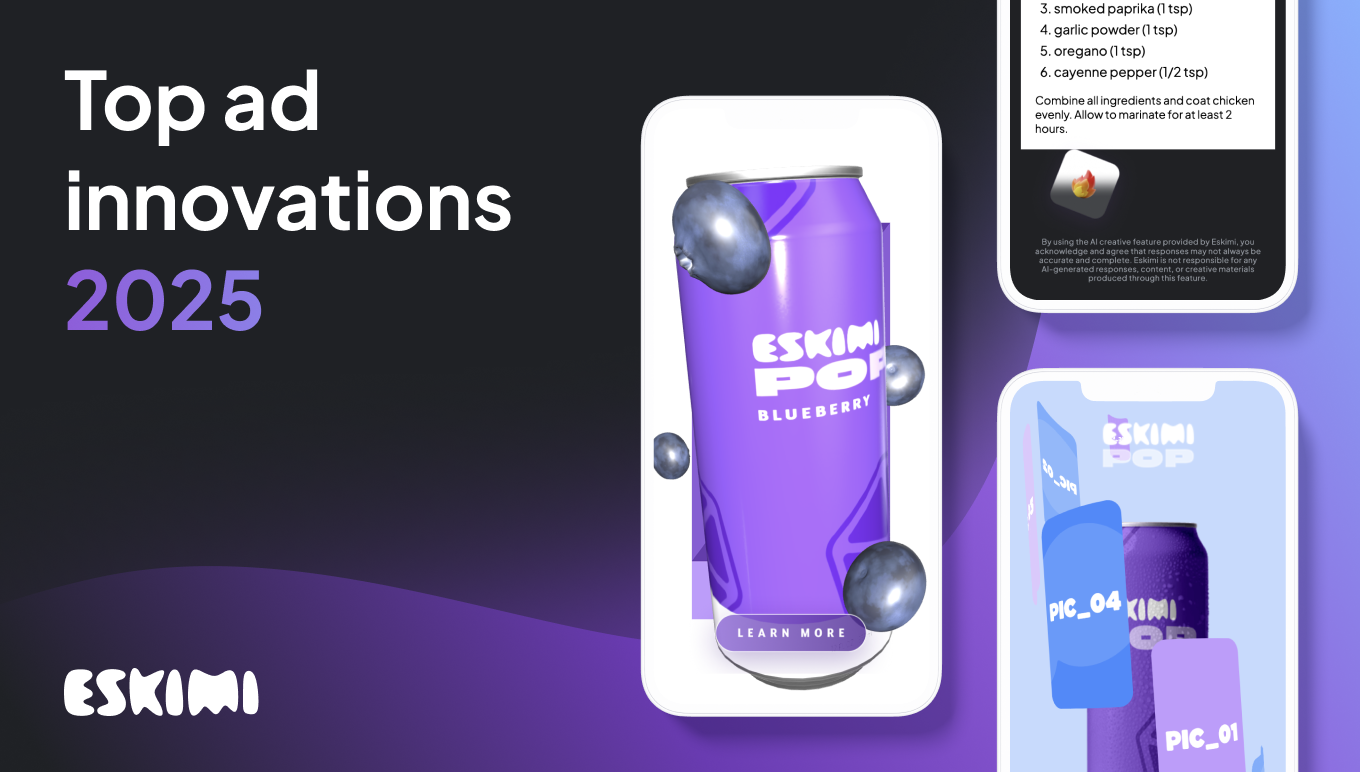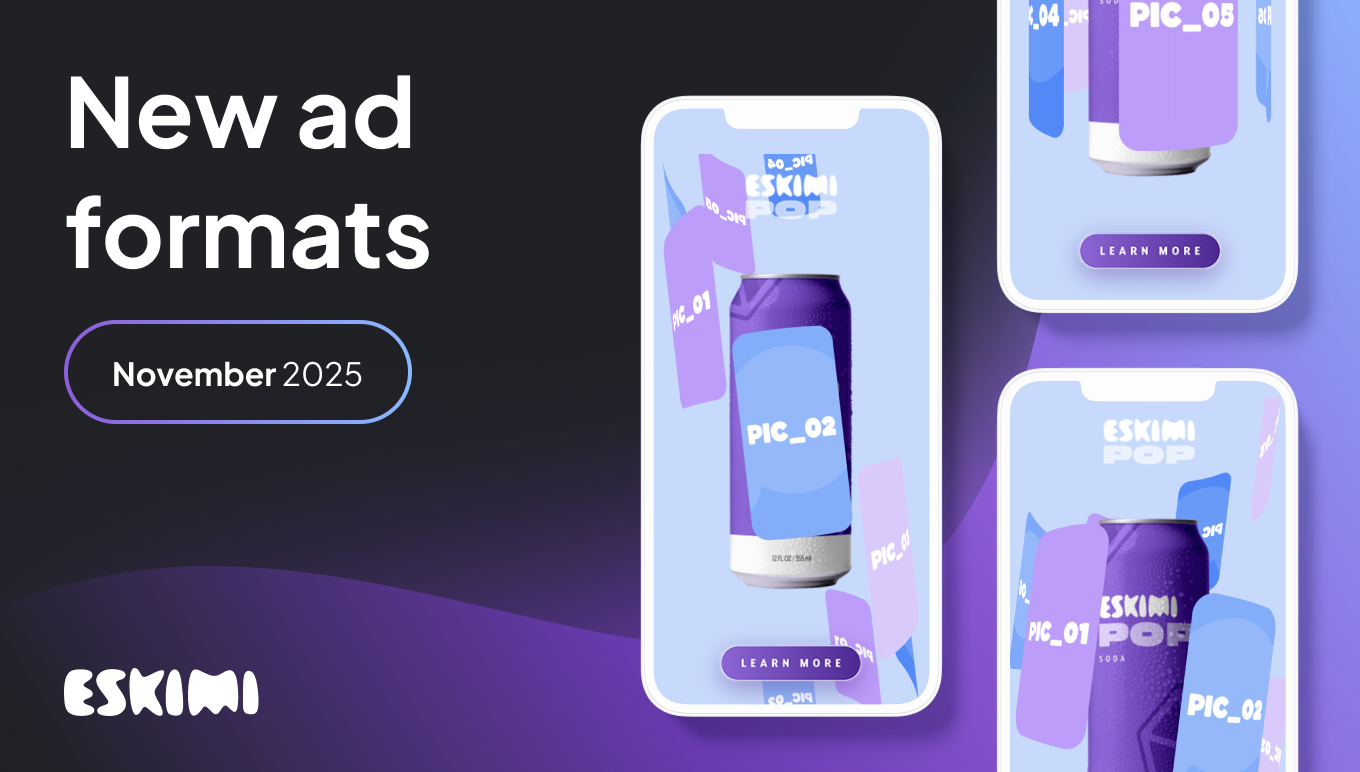Media Mix Modeling: How to Measure Marketing Performance

Allocating the proper budget to the right channel at the right time is often cited as the alchemy of successful marketing, yet this magic formula remains elusive to many. Enter Media Mix Modeling—a data-driven approach that addresses the complexity of consumer interactions across various channels.
Media mix modeling has evolved significantly over the years to become an indispensable tool in the marketer's toolkit. The digital age has transformed how consumers interact with brands, shifting from traditional mediums like television and print to various digital channels such as social media, search engines, and e-commerce platforms.
These advancements necessitate an agile and precise method of allocating marketing budgets considering the entire spectrum of consumer touchpoints.
The genesis of media mix modeling
The concept of media mix modeling isn't a new-age invention. The term was coined in 1949 by Neil H. Borden, an American academic who served as a Professor of Advertising at the Harvard Graduate School of Business Administration.
It traces back to the era when businesses primarily relied on traditional radio, print, and television advertising channels. The idea was to determine how each channel contributed to overall business goals, such as sales or brand awareness.
The pre-digital era
The term "marketing mix" originated in the 1960s, while the structured method of marketing mix modeling gained traction among marketing specialists in the 1980s and 1990s.
Lately, this modeling approach has resurfaced in the digital landscape, driven by hurdles such as Apple's privacy modifications, restricted data ecosystems, and the phasing out of third-party cookies.
In the pre-digital age, media mix modeling was relatively straightforward, albeit less accurate than today's standards. The main channels available were:
- Television: A dominant force, television advertising was usually a significant chunk of the media mix. The impact was measured using metrics like reach, impressions, and GRPs (Gross Rating Points).
- Radio: While less impactful than TV, radio offered geographic targeting and was measured through similar metrics like reach and frequency.
- Print: Newspapers and magazines were used for both broad and niche targeting. Media planners often relied on circulation numbers and reader surveys to gauge impact.
The focus was mainly on calculating ROI (Return on Investment) for each channel, using rudimentary statistical methods and survey data.
Evolution in the age of big data
With the advent of digital platforms and big data analytics, media mix modeling had to evolve. Suddenly, there was a deluge of data points to consider, from click-through rates on digital ads to social media engagement metrics. The new landscape offered:
- Granularity: Advertisers could dive deep into user-level data, exploring behavioural and demographic segments like never before.
- Real-time analysis: Unlike traditional media, digital platforms provide real-time feedback, allowing for swift optimizations.
- Cross-channel attribution: Advanced algorithms emerged to tackle attribution across online and offline channels.
- Machine learning and AI: Predictive analytics and machine learning algorithms were employed to forecast future outcomes based on historical data, thereby enabling more strategic allocation of media budgets.
What is media mix modeling?
Media Mix Modeling (MMM) is a statistical analysis technique used in marketing to evaluate the effectiveness of various media channels in driving specific business outcomes. Employing advanced analytics, MMM allows marketers to understand how different media channels combine to impact key performance indicators (KPIs) such as ROI, customer acquisition, and sales.
Analyzing the composition of media channels can address questions related to marketing, such as:
- What is the return on investment for each promotional avenue I'm using?
- How do external elements influence my organization's overall earnings?
- How do acquired, proprietary, and purchased media affect my business's return on investment?
The insights gained through MMM empower marketers to optimize advertising spend and allocation, maximizing returns.
Definition and core components
- Multi-channel analysis: Media mix modeling evaluates multiple advertising channels, such as TV, digital, print, and radio, to understand their collective impact.
- Data aggregation: It leverages historical data, often at a granular level, to perform the analysis. This can include sales data, web traffic, and consumer behaviour metrics.
- Statistical algorithms: Advanced statistical methods like regression analysis are employed to derive insights on the contribution of each channel to the desired outcome.
Objective and scope
- Optimizing advertising budget: The primary objective of media mix modeling is to determine the most effective way to allocate marketing spending across multiple channels.
- Measuring ROI: Another crucial objective is to measure the ROI of different media channels to identify which are underperforming or overperforming.
- Strategic decision-making: The scope of MMM extends beyond just budget allocation. It also informs high-level strategy, like entering new markets, launching new products, or rebranding.
- Real-time adaptation: In an advanced setup, MMM can be dynamic, allowing for real-time adjustments in marketing strategy based on ongoing results.
Advantages
- Marketing mix analysis offers empirical data to substantiate your findings, including the effects of seasonal fluctuations or shifts in consumer behaviour.
- It enables the evaluation of traditional offline advertising channels, such as television, radio, and print media.
- The approach is scientifically robust, leveraging comprehensive data sets and applying established statistical techniques like regression analysis.
- In a post-cookie world increasingly focused on privacy and data protection, marketing mix analysis serves as a measurement method that respects user privacy.
- The methodology delivers valuable information on the lasting influence of marketing strategies, aiding in the planning and predicting future sales and promotional initiatives.
Limitations
- Data quality and availability: Poor or incomplete data can lead to incorrect conclusions, making data integrity critical for effective MMM.
- Complexity and expertise required: Advanced statistical methods mean a certain level of expertise is required to conduct and interpret MMM effectively.
- Time and resource intensive: Data collection, cleaning, and analysis can be time-consuming and require significant computational resources.
- Lags in effect: Some media channels may have delayed effects that are hard to quantify, posing challenges to the model's accuracy.
Why media mix modeling is crucial
Media mix modeling is indispensable in making sense of multichannel data and informing critical decisions. Not only does it help you allocate your marketing budget more intelligently, it enables more effective campaign management and offers valuable insights through predictive analytics for future planning.
Let's delve deeper into why media mix modeling is crucial:
Marketing budget optimization
- Resource allocation: By quantifying each marketing channel’s return on investment (ROI), media mix modeling allows you to allocate your budget to maximise returns. This is an improvement over allocating budgets based on gut feeling or historical data that may not be relevant today.
- Cost efficiency: Understanding which marketing channels offer the most value for your spending helps to minimize wasteful spending. This is especially important in a highly competitive landscape where an optimized marketing budget can differentiate profit and loss.
- Dynamic adaptation: What worked yesterday might not work tomorrow in a rapidly changing market. Media mix modeling helps in real-time budget adjustments, allowing for quick adaptation to market dynamics.
Effective campaign management
- Holistic understanding: Media mix modeling provides a 360-degree view of your campaigns. By analyzing data from all your marketing channels in concert, you can identify synergies and overlaps that aren't visible when you look at channels in isolation.
- Performance benchmarking: With concrete metrics for campaign success, you can set realistic KPIs and track them effectively. This keeps your marketing team accountable and ensures your campaigns are aligned with your business goals.
- Creative optimization: Knowing which channels are most effective also tells you where your most engaging creative content should be deployed, enhancing overall campaign performance.
Predictive analytics and future planning
- Scenario planning: Advanced media mix models can simulate different budgeting scenarios to forecast potential outcomes. This is invaluable for strategizing short-term campaigns and long-term plans alike.
- Consumer behaviour analysis: By looking at how various channels impact customer behaviour over different stages of the customer journey, predictive analytics can provide actionable insights to shape future strategies.
- Market trends and seasonality: Understanding how market trends and seasonal factors influence channel effectiveness can inform your planning, helping you to capitalize on opportunities and avoid pitfalls.
Key metrics
Understanding the right metrics is crucial for anyone embarking on media mix modeling. These metrics provide a holistic view of your advertising efforts across channels and platforms. They enable you to ascertain the effectiveness of each medium in your advertising mix, helping you allocate resources more intelligently.
ROI and ROAS
ROI (Return on Investment): This is the classic metric used to determine the profitability of an advertising campaign. It's calculated by dividing the net profit from the campaign by the total advertising spend, then multiplying by 100 to get a percentage. The higher the ROI, the more effective your campaign is.

ROAS (Return on Advertising Spend): This metric is similar to ROI but is specific to your advertising efforts. It considers the revenue generated from a particular ad campaign and divides it by the cost of that campaign. Like ROI, a higher ROAS indicates more efficient spending.

Customer Lifetime Value (CLV)
The Customer Lifetime Value represents the total value a customer brings to your business over their relationship with your brand. Knowing this metric lets you understand how much you can spend on acquiring a new customer.
In media mix modeling, CLV helps you determine which channels bring in customers who purchase and continue to engage with your brand over time.

Cost Per Acquisition (CPA)
The Cost Per Acquisition measures how much it costs to acquire a new customer through a particular advertising channel or campaign.
CPA is crucial because it lets you understand the immediate cost implications of your advertising efforts. Lower CPA means acquiring customers more efficiently, directly impacting ROI and ROAS.

Market share and brand equity
Market share reflects your brand's portion of sales in a particular market. A higher market share generally implies a stronger brand presence. Brand equity is a qualitative metric that considers public perception and the inherent value a brand adds to its products.
Media mix modeling and programmatic advertising: The overlap
Media mix modeling (MMM) and programmatic advertising significantly advance how marketers approach media planning and buying. While MMM provides a holistic overview of the effectiveness of various marketing channels, programmatic advertising offers automation and precision targeting.
Combined, they elevate not only the efficiency but also the efficacy of advertising campaigns. As programmatic systems ingest real-time data to inform ad placements, MMM incorporates this data to offer strategic recommendations. The result is a symbiotic relationship where each approach amplifies the other's strengths, providing advertisers with a comprehensive toolkit for optimizing ROI.

Why they're better together
- Holistic analysis: Media mix modeling offers a macro-level analysis that considers all media channels, allowing you to understand the bigger picture. Programmatic advertising, on the other hand, specializes in micro-level, real-time optimizations. Marrying these two gives you a comprehensive, 360-degree view of your media landscape.
- Data utilization: Programmatic platforms produce a wealth of real-time data. When integrated into MMM, this data can provide immediate insights that can be actioned upon quickly, creating a more dynamic and responsive media strategy.
- Resource optimization: By leveraging both approaches, businesses can allocate their advertising budgets more effectively. They can fine-tune their spending in real-time based on the insights gathered through MMM, ensuring maximum ROI.
Challenges and solutions
Data fragmentation
- Challenge: Data fragmentation can be a significant obstacle with various data sources coming into play—from web analytics to CRM systems.
- Solution: Implementing a unified data management platform (DMP) can help centralize data sources, making integrating data into MMM and programmatic platforms easier.
Attribution issues
- Challenge: Attribution in a multichannel marketing environment can be complex, leading to difficulties in attributing conversions to specific channels.
- Solution: Using advanced attribution models within your media mix modeling can offer a more nuanced understanding of how different channels contribute to conversions, allowing for better decision-making in programmatic ad placements.
Whether you employ a variety of demand-side platforms or solely use our service, you likely purchase media across diverse channels—ranging from display ads to audio streams to connected TV. Incorporating more detailed data into your marketing mix model can frequently enhance result precision.
- Segment your programmatic providers into distinct categories.
- Within these categories, further subdivided by the specific media channels you're utilizing with each partner, ensuring you have unique entries for Connected TV, display advertising, etc.
- Distinguish between video platforms and their formats — avoid lumping TV and online videos under the same category, for instance.
Look at programmatic and direct purchases as distinct entities within those channels.
Sports Betting Company Example
Imagine your online sports betting company is ramping up its promotions for the Super Bowl.
Your marketing budget for this pivotal week stands at $1,350,000. To maximize your return, you deploy a diverse array of tactics: website content development, traditional advertising, online advertising, social media campaigns, search strategies, email marketing, and participation in events and conferences.
With Media Mix Modeling (MMM), you can precisely allocate your budget to these channels, gaining insights into how each one impacted your revenue. Here’s a breakdown of your spend per channel based on your total budget:

As with any good MMM, there's a portion of your results that might serve as your baseline—this represents the revenue you could anticipate without any promotional efforts.
Beyond these specific channels, your MMM should incorporate various influencing factors:
- Economic data: Keep in mind elements like changes in laws affecting online betting, fluctuations in consumer confidence and disposable income, and broader economic conditions, including unemployment rates.
- Competitor analysis: Watch for promotions, bonuses, new product launches, and advertising strategies of your rivals.
- Customer insights: Dive into data from surveys, user reviews, and user behaviour analytics on your platform.
Why calibration through ad experiments is crucial
Recent Harvard Business Review field research with digital marketing professionals indicates that implementing ad experiments to fine-tune models is essential for mitigating inaccuracies in MMM projections. Other research reports showed an average calibration correction of 25%
- Aggregate data vs. personalization: MMMs are robust when dealing with aggregate data, but they can be unreliable if your advertising strategies and competitive dynamics differ across channels. This issue becomes acute with highly personalized ad campaigns typical in digital advertising.
- Experimental validation: The research showed that calibration through ad experiments corrected MMM-based ROAS (Return-On-Ad-Spend) estimates by an average of 15%.
- Niche markets need more calibration: Targeting custom audiences, especially in the U.S., required the highest overall calibration adjustment—56%. This suggests that brands with a niche focus should conduct more frequent experiments to calibrate their models.
Future-ready ad experiments
The same data constraints that make MMM valuable again also affect the types of ad experiments one can conduct. Experiments may focus more on on-site metrics or utilize differential privacy techniques. Geo-ad experiments, where certain geographic areas are exposed to specific ads, are also becoming increasingly relevant.
Calibration approaches for your MMM
- Qualitative similarity: Compare MMM and ad experiment results to ensure they align. If they don’t, adjust the MMM parameters until they do.
- Model selection: Create multiple models and choose the one that aligns closest to the ad experiment results.
- Direct integration: Directly use experiment results to estimate your MMM. This is the most rigorous but also the most challenging approach to implement.
How often should you calibrate your MMM?
Calibration frequency is highly dependent on your brand's size, target audience, and number of channels. The higher the monthly ad spend and the more channels you use, the more frequently you should consider calibrating your MMM.
Level Up Your Advertising with Eskimi
- Reach 96% of Open Web
- 2,500+ Targeting Options
- 100% Managed or Self-Service
- In-House Creative Studio Team
- Display, Video, In-Game & CTV
- #1 Rated DSP on G2





